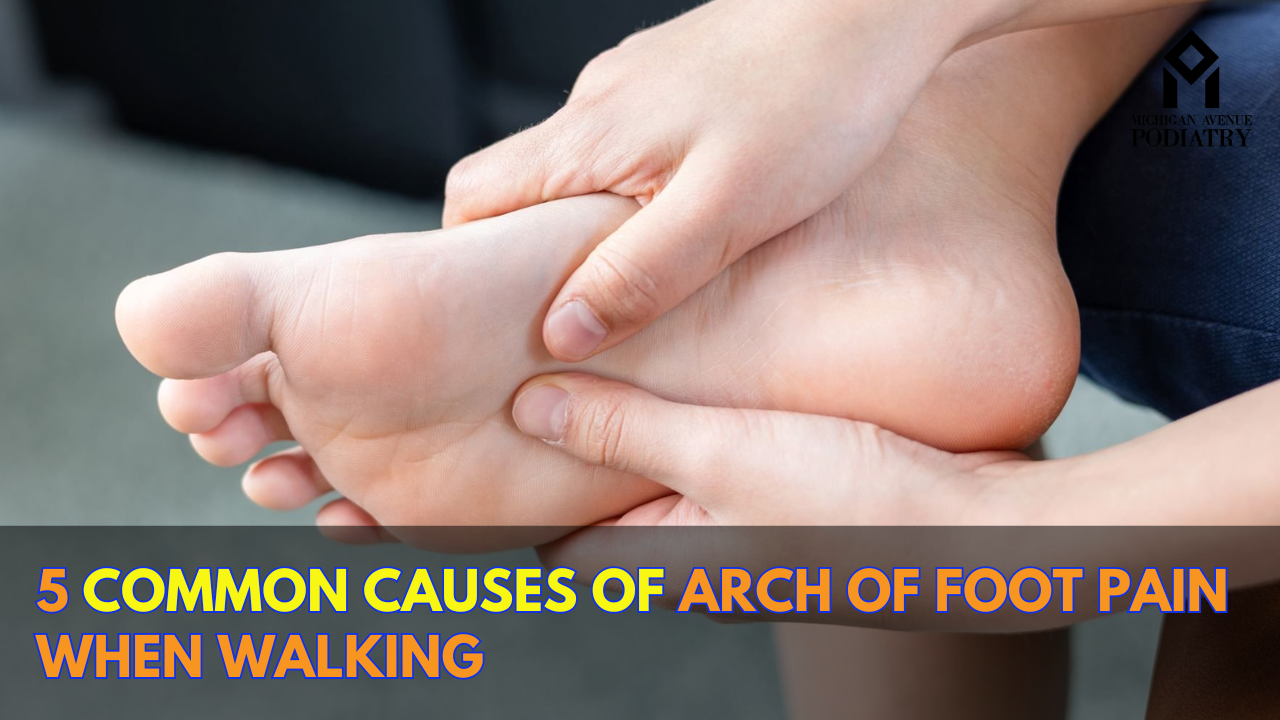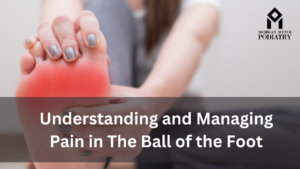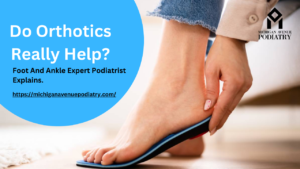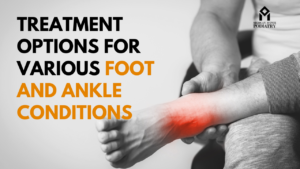The foot is a marvel of engineering, a complex structure that propels us forward, absorbs impact and maintains balance. But sometimes, this intricate system can malfunction, leading to pain – especially in the crucial arch. Pain in the arch of your foot can significantly impact your daily life, hindering your ability to get around and enjoy activities.
5 Common Causes of Arch of Foot Pain
If you’re experiencing pain in the arch of your foot when walking, you’re not alone. This is a prevalent issue, and understanding the potential culprits can be the first step towards finding relief. Here, we explore five common causes of foot pain while walking in the arch, along with treatment options and when to consult a podiatrist.
Plantar Fasciitis: The Inflammation Culprit for Arch of Foot Pain
Topping the list of arch pain culprits is plantar fasciitis. This condition involves inflammation of the plantar fascia, a thick band of tissue that runs along the bottom of your foot, connecting your heel to your toes. It acts as a shock absorber and supports the arch.
Causes: Repetitive stress on the plantar fascia, often from activities like running, jumping, or prolonged standing on hard surfaces, can lead to micro-tears and inflammation. Tight calf muscles, obesity, and improper footwear can also contribute.
Symptoms: Plantar fasciitis typically presents with a sharp, stabbing pain in the heel or arch of the foot, often worse upon taking your first steps in the morning or after periods of rest. The pain may lessen as you walk but can return with prolonged activity.
Treatment: Rest, ice application, stretching exercises for the calf muscles and plantar fascia, and supportive shoes with good arch support are the cornerstones of treatment. In some cases, anti-inflammatory medications, night splints, or physical therapy may be necessary.
Overpronation: When Your Foot Rolls Inward
Overpronation is a biomechanical issue where your foot rolls excessively inwards when you walk or run. This puts extra strain on the arch, the plantar fascia, and other structures in your foot.
Causes: Weak ankles, flat feet, or certain types of footwear can contribute to overpronation.
Symptoms: Along with arch pain, overpronation may manifest as pain in the heel, ankle, or even the knee. You might also notice uneven wear patterns on your shoes, with excessive wear on the inner soles.
Treatment: Supportive shoes with built-in arch support or orthotics prescribed by a podiatrist can help to correct overpronation and alleviate arch pain. Strengthening exercises for the muscles in your feet and ankles can also play a crucial role.
Flat Feet: When the Arches Don’t Rise
Flat feet, a condition where the arches of your feet collapse inwards when you stand, can also contribute to arch pain. While some people are naturally flat-footed without experiencing any problems, others may develop pain due to the increased stress placed on the plantar fascia and other structures.
Causes: Flat feet can be inherited or develop over time due to factors like obesity, tight calf muscles, or previous injuries.
Symptoms: Heel pain while walking, pain in the arch, or ankle, along with fatigue in the feet and legs, are common signs of flat feet-related arch pain. You might also experience difficulty balancing or an awkward gait.
Treatment: Supportive shoes and orthotics can help distribute weight more evenly across your feet and alleviate arch pain. In some cases, physical therapy exercises or custom arch supports may be recommended.
Cavus Foot: The High Arch Paradox
While flat feet cause the arches to collapse inwards, the cavus foot presents the opposite extreme. Here, the arches are abnormally high, resulting in an imbalance in weight distribution and the potential for arch pain.
Causes: Cavus foot can be a congenital condition or develop due to neurological disorders, muscle weakness, or injuries.
Symptoms: People with cavus foot may experience foot pain while walking in the arch, forefoot, or ball of the foot, along with difficulty finding comfortable shoes due to the high arch shape.
Treatment: Supportive shoes with good cushioning and custom orthotics designed for high arches can help alleviate pain and improve weight distribution. Physical therapy exercises to strengthen the foot muscles may also be beneficial.
Posterior Tibial Tendon Dysfunction (PTTD): When the Tibialis Posterior Weakens
The posterior tibial tendon is a crucial structure that supports the arch and helps control the inward rolling of the foot. PTTD occurs when this tendon becomes inflamed or weakened, leading to arch pain and other issues.
Causes: Overuse injuries from activities like running or walking on uneven terrain, obesity, and improper footwear can contribute to PTTD.
Symptoms: Pain and tenderness on the inner side of the ankle and arch, along with swelling and difficulty pushing off while walking, are common signs of PTTD. In severe cases, the ankle may become unstable or develop a flatfoot deformity.
Treatment: Rest, ice application, anti-inflammatory medication, and physical therapy are the mainstays of PTTD treatment. Physical therapy focuses on strengthening the muscles that support the arch and improving flexibility. In some cases, a walking boot or brace may be necessary to immobilize the ankle and allow for healing.
When to See a Podiatrist
If your foot hurts when walking and persists despite home remedies or worsens over time, it’s vital to consult a podiatrist. A podiatrist is a foot and ankle specialist who can diagnose the underlying cause of your pain and recommend the most appropriate treatment plan.
They will perform a comprehensive examination of your feet and ankles, including a gait analysis to assess how your foot rolls when you walk. X-rays or other imaging tests may be necessary to rule out fractures or other structural abnormalities.
Conclusion
Arch of foot pain while walking can significantly disrupt your daily activities. By understanding the common causes and treatment options, you can take steps to alleviate the discomfort and get back on your feet. Remember, early diagnosis and intervention are key to managing pain in the arch of your foot when you walk effectively. If your pain persists, don’t hesitate to seek professional help from a podiatrist. With proper treatment, you can conquer those aches and walk comfortably once again.




